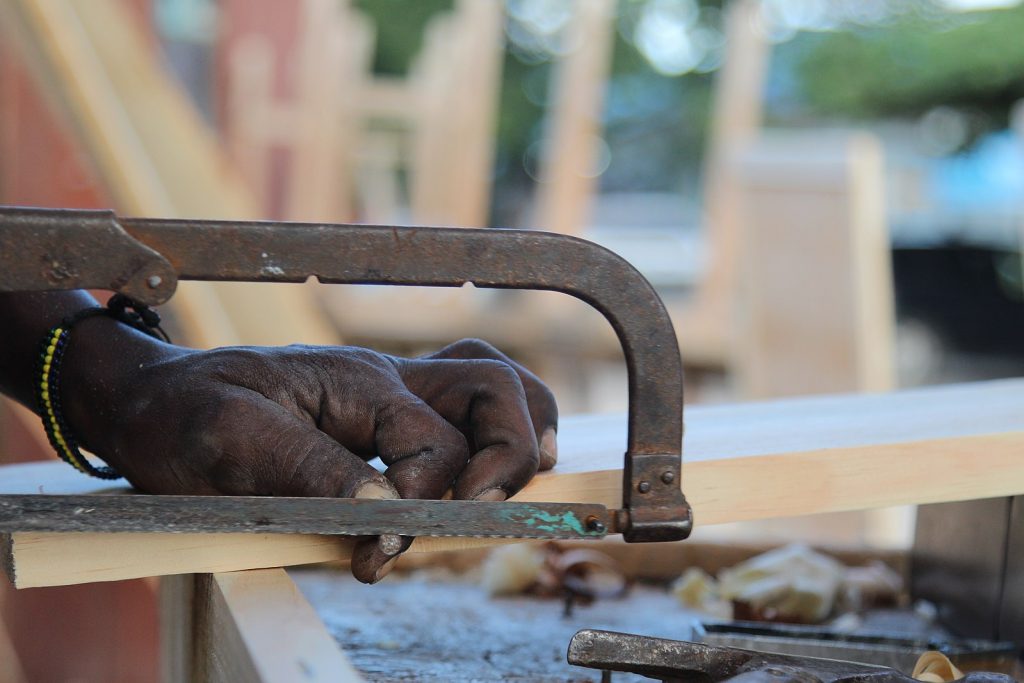
Esternome Laborieux is the deuteragonist of the novel Texaco by Patrick Chamoiseau. His life is characterized by a series of ups and downs and attempts of mediating his want for stability with his feeling of obligation for change. He is the father of the narrator, Marie-Sophie Laborieux. Esternome’s life is recounted throughout the first half of the novel in stories he had told Marie-Sophie that she retells to others. However, she discloses that she was never definitively given the linear layout of these events (Chamoiseau 200). Therefore, it should be known that the following timeline of his history is based on approximations and may hold errs in sequencing.
Early Life
Esternome was the first enslaved person to be born on his sugar cane plantation, an event that spurred conflicting feelings among its inhabitants. His conception was celebrated by the Béké that ran his plantation but was seen as a failure by the enslaved community. The leaders wished for “No children born in chains” (Chamoiseau 35). The order stemmed in history after the British Slave Trade ended in 1802 and made Atlantic slave trade illegal. Caribbean enslaved people tried to disadvantage their slaveowners by depriving them of using their children as a new slave source through any means possible such as abortion, contraceptives, and poisons (Morgan 245).
Esternome became a houseslave and spent most his days carrying out labor within the Big Hutch. Here he experienced a pivotal point in the course of his life: developing his interest in carpentry while studying the Big Hutch’s architecture. Marie-Sophie even remarks that, “This view of the frame probably determined the course of his life, his destiny, and finally mine” (Chamoiseau 44).
Personal Freedom
During a food shortage that would prelude many events of hunger in Esternome’s life, the Béké brought him on a hunting trip that would end up leading to his freedom. The Béké was attacked during it by an escaped formally enslaved person, but Esternome saved him by killing the attacker. He gained savanna freedom as thanks for risking his life to save him. Despite attaining freedom, it took time and strong persuasion to convince Esternome to leave the plantation. He departed with a carpenter named Théodorus after a hurricane destroyed many of the plantation’s structures, and he was driven to leave by the lingering trauma of his father’s death there as well as his Mentoh assigned task to begin a conquest of the land and of “City.”
Career
Esternome continued to work as a carpenter throughout Saint-Pierre wherein he forged some of his strongest connections. He was present in the city when France announced their emancipation of the enslaved persons, and in the ensuing celebration he met Ninon. Ninon would be his lover and partner for decades to come afterwards. He went with her to try and establish a community of what he called the ‘Noutéka of the Hills’ where he would start his conquest. He used his carpentry skills to erect many of the structures here for decades to come and was well-liked by the people there. He used his carpentry as a way to express his independence, as these hutches were what allowed a community to flourish outside the oversight of békés and run without the control of whites.
Move to Fort-de-France
In 1902, the eruption of Mount Pelée destroyed the entirety of Saint-Pierre and left Esternome in a heavily shocked state for months or years to come. The eruption was one of the deadliest of the century, wiping out 30,000 inhabitants within 2 minutes, with Ninon presumed among their ranks. Refugees to the disaster traveled to Fort-de-France after losing nearly everything. He roamed around aimlessly for months with his only goal being his next meal. Here, Patrick Chamoiseau dives into a theme prevalent in his works: hunger. Chamoiseau drives home that, “The hunger for real food supersedes and even destroys the possibility of a coherent moral or symbolic order… [survival] comes at the cost of abandoning the moral universe; it involves rejecting a collective identity” (Tarica 44). Every time Esternome approaches a stable lifestyle, it is upended by calamity and he is left in a state of waiting for someone to save him, and then he devotes his time to trying to cling onto that savior and build a strong enough foundation that will hopefully not fall apart like his other periods in life. Esternome behaves as though he has lost all free will and listlessly follows Adrienne Lapidaille, a woman handing out food to refugees of the eruption. Adrienne is able to take advantage of his dependence on her and leads her to her home where he meets Idoménée Lapidaille. He cares for her while Adrienne works, and the two fall in love and give birth to Marie-Sophie.
End of Life
The end of Esternome’s life was plagued by misfortune after the untimely death of Idoménée. Esternome was badly beaten by his landlord after failing to pay his rent. He never fully recovered from his injuries. He was rendered bedridden and took this time to tell Marie-Sophie the stories about his life. He shortly thereafter began to experience deteriorating memory loss. It is unclear in the novel whether this is solely due to traumatic brain injuries he suffered or was in part to his old age. He died without ever fully recovering and his body was found by Marie-Sophie.
Works Cited
Chamoiseau, Patrick. Texaco. Trans. Rose-Myriam Réjouis & Val Vinokurov. NY: Vintage, 1997.
Morgan, Kenneth. “Slave Women and Reproduction in Jamaica, c.1776–1834.” History, vol. 91, no. 2 (302), 2006, pp. 231–53, http://www.jstor.org/stable/24427835. Accessed 4 Apr. 2022.
Tarica, Estelle. “Patrick Chamoiseau’s Creole Conteur and the Ethics of Survival.” International Journal of Francophone Studies, vol. 13, no. 1, Intellect, 2010, pp. 39–56, https://doi.org/10.1386/ijfs.13.1.39/1.
Editorial Collective
Arden Brady, Matéa Diekema, John Morra

